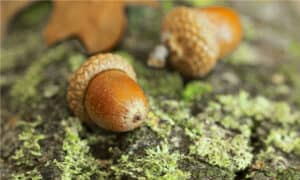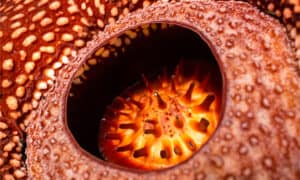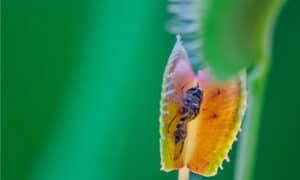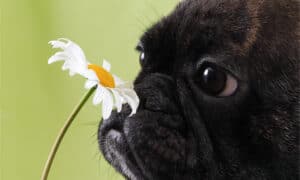Are Marigolds Poisonous To Dogs or Cats?
@media (min-width: 481px) {
.mobile-top-content {
display: none;
}
}
#mobileTopContentCTACarouselControls { overflow: hidden; text-overflow: ellipsis; white-space: nowrap; }
.mobile-top-content .more { color: #fff; }
.mobile-top-content a { color: #fff; text-decoration: underline; }
.mobile-top-content a:hover { color: #fff; text-decoration: underline; }
@media (max-width: 480px) {
.mobile-top-content {
background-color: #06a10b;
color: #fff;
text-align: center;
/*height: 60px;
padding-top:5px;*/
font-size:80%;
/* display: block; */
margin: 0px -30px;
}
}
Pets that enjoy exploring the great outdoors can cause some anxiety, especially if you or your neighbors are keen gardeners. Over 700 different plants are toxic to cats and dogs, ranging from mild to severe, and it’s important to know which ones are safe for your pets to grow in your garden. Marigolds are one such plant that can fall into the category of toxicity in cats and dogs if exposed. Keep reading to learn how poisonous marigolds can be and what to do if your pet shows signs of toxicity.
Are Marigolds Poisonous To Dogs or Cats?

Nick Pecker/Shutterstock.com
The ASCPA defines Marigolds as non-toxic to cats and dogs. But this is particularly peculiar to the Pot Marigold. Yet, if your dog or cat eats too many of these attractive flowers, they may experience negative effects like stomach upset. The side effect, however, is not caused by any toxicity from the flower but as a result of eating something unusual.
On the other hand, the Tagetes species is known to create more issues for pets, particularly cats. This toxicity is usually relatively moderate, but it needs to be addressed swiftly if symptoms continue for more than an hour.
Training your pets to avoid eating yard plants and keeping an eye on them when they are alone for extended periods of time is therefore essential.
Side Effects Of Marigolds Ingestion For Cats and Dogs

EQRoy/Shutterstock.com
A lot of cats and dogs are fascinated by these attractive blooms, placing them high on the list of concerns. For dogs and cats, marigolds can cause some unpleasant side effects when they can’t resist the temptation to eat them.
Signs of marigold ingestion in dogs and cats can include:
- Dehydration
- Diarrhea
- Excessive Drooling
- Skin Irritation
- Vomiting
This is not a complete list of symptoms, although these are the most prevalent. There is no way to know how a particular pet will respond to ingesting marigolds. Therefore, it is crucial to take them to see a vet should they demonstrate any of the above-stated indicators for longer than an hour. In most cases, symtoms are extremely mild, and will pass quickly.
What To Do If Your Dog Or Cat Shows Symptoms Of Marigold Toxicity

Vasmila/Shutterstock.com
Firstly, give your pet water to drink for the next 12 to 24 hours. It’s better to desist from feeding your pet with anything solid until the symptoms cease. When in doubt, always contact your vet. Some vets may recommend that you wait it out with your pet if the symptoms are mild enough. If your pet exhibits any signs of discomfort on their skin, you can remove any marigold sap by washing your dog or cat with warm water and a pet-friendly shampoo. Although waterless shampoos may be less helpful in this situation, you can use one if your cat is averse to the water.
You should absolutely take your dog or cat to the vet if any symptoms persist for more than an hour. Typically, your pet shouldn’t be at risk from eating these flowers. But sometimes, poisoning might emerge from the ingestion of chemicals such as pesticides and fertilizers that were sprayed on the plants. In such cases, veterinary fluid therapies may be recommended especially when an animal’s symptoms are severe or persist long enough to cause malnourishment or dehydration.
Conclusion
Drooling, skin irritations, vomiting, and diarrhea can all lead to dehydration in pets. So, it’s best to keep an eye out for any of these symptoms and monitor your pets carefully.
If your cat or dog has access to marigolds, keep a tight eye on him or her. Even though they aren’t regarded as very hazardous, Your best bet is to teach your pets to avoid all plants. Discourage your pets from eating these colorful blooms, and they’ll be less likely to consume other, potentially more dangerous plants in the future.
FAQs (Frequently Asked Questions)
Did You Know?
For centuries, the marigold flower has been associated with the virtues of beauty; warmth; creativity; ambition; and the celebration of the dead. In pre-Hispanic Mexico, marigolds were regarded as the flower of the dead and are still utilized as a symbol during Day of the Dead celebrations.
More from A-Z Animals
.more-snake-card-image { max-height:140px !important; }
@media (min-width: 481px) {
.mobile-top-content {
display: none;
}
}
#mobileTopContentCTACarouselControls { overflow: hidden; text-overflow: ellipsis; white-space: nowrap; }
.mobile-top-content .more { color: #fff; }
.mobile-top-content a { color: #fff; text-decoration: underline; }
.mobile-top-content a:hover { color: #fff; text-decoration: underline; }
@media (max-width: 480px) {
.mobile-top-content {
background-color: #06a10b;
color: #fff;
text-align: center;
/*height: 60px;
padding-top:5px;*/
font-size:80%;
/* display: block; */
margin: 0px -30px;
}
}
Pets that enjoy exploring the great outdoors can cause some anxiety, especially if you or your neighbors are keen gardeners. Over 700 different plants are toxic to cats and dogs, ranging from mild to severe, and it’s important to know which ones are safe for your pets to grow in your garden. Marigolds are one such plant that can fall into the category of toxicity in cats and dogs if exposed. Keep reading to learn how poisonous marigolds can be and what to do if your pet shows signs of toxicity.
Are Marigolds Poisonous To Dogs or Cats?

Nick Pecker/Shutterstock.com
The ASCPA defines Marigolds as non-toxic to cats and dogs. But this is particularly peculiar to the Pot Marigold. Yet, if your dog or cat eats too many of these attractive flowers, they may experience negative effects like stomach upset. The side effect, however, is not caused by any toxicity from the flower but as a result of eating something unusual.
On the other hand, the Tagetes species is known to create more issues for pets, particularly cats. This toxicity is usually relatively moderate, but it needs to be addressed swiftly if symptoms continue for more than an hour.
Training your pets to avoid eating yard plants and keeping an eye on them when they are alone for extended periods of time is therefore essential.
Side Effects Of Marigolds Ingestion For Cats and Dogs

EQRoy/Shutterstock.com
A lot of cats and dogs are fascinated by these attractive blooms, placing them high on the list of concerns. For dogs and cats, marigolds can cause some unpleasant side effects when they can’t resist the temptation to eat them.
Signs of marigold ingestion in dogs and cats can include:
- Dehydration
- Diarrhea
- Excessive Drooling
- Skin Irritation
- Vomiting
This is not a complete list of symptoms, although these are the most prevalent. There is no way to know how a particular pet will respond to ingesting marigolds. Therefore, it is crucial to take them to see a vet should they demonstrate any of the above-stated indicators for longer than an hour. In most cases, symtoms are extremely mild, and will pass quickly.
What To Do If Your Dog Or Cat Shows Symptoms Of Marigold Toxicity

Vasmila/Shutterstock.com
Firstly, give your pet water to drink for the next 12 to 24 hours. It’s better to desist from feeding your pet with anything solid until the symptoms cease. When in doubt, always contact your vet. Some vets may recommend that you wait it out with your pet if the symptoms are mild enough. If your pet exhibits any signs of discomfort on their skin, you can remove any marigold sap by washing your dog or cat with warm water and a pet-friendly shampoo. Although waterless shampoos may be less helpful in this situation, you can use one if your cat is averse to the water.
You should absolutely take your dog or cat to the vet if any symptoms persist for more than an hour. Typically, your pet shouldn’t be at risk from eating these flowers. But sometimes, poisoning might emerge from the ingestion of chemicals such as pesticides and fertilizers that were sprayed on the plants. In such cases, veterinary fluid therapies may be recommended especially when an animal’s symptoms are severe or persist long enough to cause malnourishment or dehydration.
Conclusion
Drooling, skin irritations, vomiting, and diarrhea can all lead to dehydration in pets. So, it’s best to keep an eye out for any of these symptoms and monitor your pets carefully.
If your cat or dog has access to marigolds, keep a tight eye on him or her. Even though they aren’t regarded as very hazardous, Your best bet is to teach your pets to avoid all plants. Discourage your pets from eating these colorful blooms, and they’ll be less likely to consume other, potentially more dangerous plants in the future.






